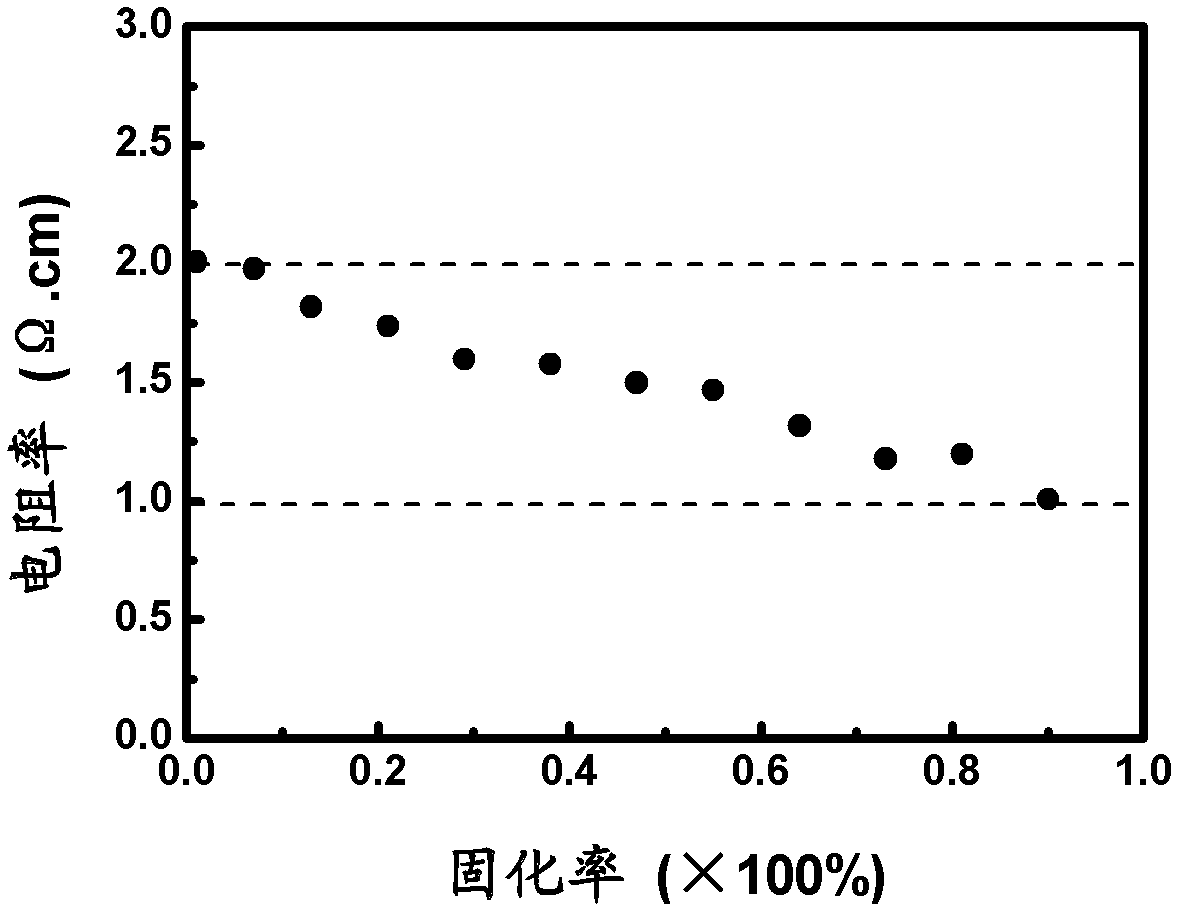N-type casting policrystalline silicon with uniform doping resistivity and preparation method thereof
A technology of resistivity and casting method, applied in the field of solar cell materials, can solve the problems of low utilization rate of high-efficiency solar cell materials, large axial variation range of resistivity of N-type phosphorus-doped polysilicon ingots, etc., and achieves easy large-scale application. , the effect of improving the utilization rate and reducing the manufacturing cost
- Summary
- Abstract
- Description
- Claims
- Application Information
AI Technical Summary
Problems solved by technology
Method used
Image
Examples
Embodiment 1
[0024] First put 53.04mg of phosphorus and 1.74g of gallium into the bottom of the crucible, then put 240kg of high-purity electronic-grade polysilicon into the quartz crucible and load it into the furnace. Under the protection of argon, melt the polysilicon material at 1410°C to melt phosphorus and gallium into the polysilicon solution, lift the heat preservation cover in the furnace at a speed of 2mm / min, and blow cooling gas into the bottom of the crucible at the same time to exchange heat for the silicon melt It mainly occurs at the bottom of the crucible, and the polysilicon ingot is grown by directional solidification. Sampling at different parts of the growing polysilicon ingot, and then testing the axial distribution of the resistivity of the growing polysilicon ingot by the four-probe method, as shown in the attached figure 1 shown. It can be seen that the resistivity of about 90% of the polysilicon ingots is distributed in the range of 1.0-2.0Ω.cm. Therefore, the u...
Embodiment 2
[0026] First put 45.46mg of phosphorus and 2.49g of gallium into the bottom of the crucible, and then put 240kg of metallurgical-grade boron-phosphorus compensation silicon material (containing 2.35mg of boron and 30.29mg of phosphorus in total) into the crucible. Under the protection of argon, melt the polysilicon material at 1410°C to melt phosphorus and gallium into the polysilicon solution, lift the heat preservation cover in the furnace at a speed of 5mm / min, and blow cooling gas into the bottom of the crucible at the same time, and heat exchange of the silicon melt It mainly occurs at the bottom of the crucible and grows polysilicon ingots through directional solidification. Samples were taken at different parts of the grown polycrystalline silicon ingot, and then the axial distribution of the resistivity of the grown polycrystalline silicon ingot was tested by the four-probe method, as shown in the attached figure 2 shown. It can be seen that the resistivity of about ...
PUM
| Property | Measurement | Unit |
|---|---|---|
| electrical resistivity | aaaaa | aaaaa |
| electrical resistivity | aaaaa | aaaaa |
Abstract
Description
Claims
Application Information
 Login to View More
Login to View More - R&D
- Intellectual Property
- Life Sciences
- Materials
- Tech Scout
- Unparalleled Data Quality
- Higher Quality Content
- 60% Fewer Hallucinations
Browse by: Latest US Patents, China's latest patents, Technical Efficacy Thesaurus, Application Domain, Technology Topic, Popular Technical Reports.
© 2025 PatSnap. All rights reserved.Legal|Privacy policy|Modern Slavery Act Transparency Statement|Sitemap|About US| Contact US: help@patsnap.com


